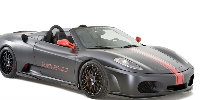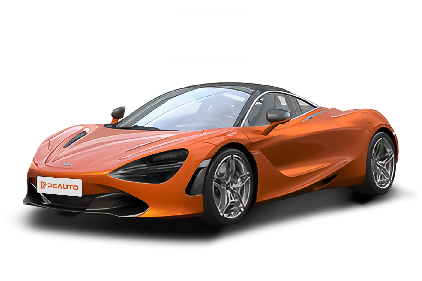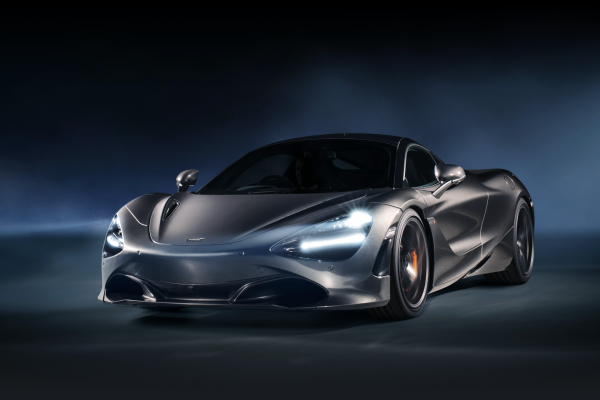Q
What engine is McLaren 720S equipped with?
The McLaren 720S is powered by a 4.0-liter twin-turbocharged V8 engine codenamed M840T, a powerplant developed entirely in-house by McLaren. It cranks out 720 horsepower and a whopping 770 Nm of torque, paired with a 7-speed dual-clutch gearbox that rockets this machine from 0-100 km/h in just 2.9 seconds, with a top speed hitting 341 km/h flat. McLaren didn't skimp on lightweight tech here—think aluminum cylinder block and heads, plus race-grade pistons and connecting rods, all working together to keep it reliable and razor-sharp even when screaming at high revs.
For Malaysian petrolheads, the 720S’s performance is a perfect match for local highways and track days. Its engine tech really showcases McLaren’s leadership in the supercar game—you’ll find similar engines in other McLarens like the 600LT and Senna, though they’re tuned a bit differently. And if you’re into high-performance engines, here’s a cool twist: it even has cylinder deactivation. Yep, at low loads, it shuts down some cylinders to save fuel. Not something you see every day in a supercar, right?
Special Disclaimer: This content is published by users and does not represent the views or position of PCauto.
Related Q&A
Q
How much horsepower does a 2019 McLaren 720S have?
The 2019 McLaren 720S is powered by a 4.0-liter twin-turbocharged V8 engine cranking out 720 horsepower—hence the "720S" in its name—and a meaty 770 Nm of torque. Mated to a 7-speed dual-clutch gearbox, this thing rockets from 0-100 km/h in just 2.9 seconds and tops out at 341 km/h. Performance-wise, it's an absolute beast.
Underpinning it all is the Monocage II carbon fiber monocoque chassis, which nails that perfect balance of featherweight construction and seriously beefed-up rigidity. Then there's the aerodynamics—total next-level stuff. The active rear wing and those wild dihedral doors aren't just for show; they work overtime to generate serious downforce at high speeds.
For Malaysian petrolheads, the 720S hits that sweet spot between track-ready weapon and daily-drivable supercar. Sure, our hot and humid climate can be tough on high-performance cooling systems, but McLaren's engineering team has that covered. This thing stays cool and composed, no matter what you throw at it.
And let's not sleep on the cockpit. It's all about driver ergonomics here, with a sharp digital instrument cluster and a slick infotainment system. So you're not just getting mind-blowing speed—you're getting luxury and tech to match.
Q
Who makes the McLaren 720S engine?
The McLaren 720S gets its heart from McLaren's own engineering team – specifically, a 4.0-liter twin-turbocharged V8 engine codenamed M840T. This powerplant is designed and built entirely at McLaren's UK production facility, really showcasing the brand's deep technical prowess when it comes to high-performance powertrains. The M840T cranks out 720 horsepower and 770 Nm of peak torque, and when paired with that 7-speed dual-clutch gearbox, it hurls the 720S from 0-100 km/h in just 2.9 seconds, with a top speed of 341 km/h. That's some seriously impressive performance. For Malaysian petrolheads, the McLaren 720S isn't just another supercar; it's a masterpiece of engineering. Its engine tech highlights McLaren's leading edge in lightweight materials and aerodynamics, and the car has built up a solid presence in Malaysia's luxury high-performance car market, earning plenty of love from local automotive enthusiasts. What's more, McLaren keeps refining its engine tech to strike that balance between performance and environmental responsibility – think efficient turbocharging systems and precise fuel management to boost fuel economy. That's especially crucial in a market like Malaysia, where a passion for high-performance cars goes hand-in-hand with growing environmental awareness.
Q
What is the interior like on a 2019 720S?
The interior of the 2019 McLaren 720S screams supercar from every angle. They’ve gone all-in on lightweight materials—think plenty of carbon fiber and Alcantara—without skimping on that premium feel. The seats? Wrapped in high-grade leather, they offer killer support, whether you’re bombing down a highway or attacking a set of twisties.
The center console is clean, driver-focused, and home to an 8-inch vertical touchscreen that handles Apple CarPlay and navigation like a pro. Then there’s that trick folding digital gauge cluster—it changes what info it displays based on your driving mode, adding a serious tech edge.
Storage space? Yeah, it’s tight, but let’s be real—when you’re buying a performance machine like this, cargo room isn’t exactly top of the priority list. One thing that really stands out is the "Monocage II" carbon fiber tub. It’s a smart move, cutting weight while beefing up rigidity—a setup you don’t see in every supercar.
For folks in Malaysia, the 720S holds up well in the heat. The AC cranks hard, and the seat ventilation works a treat. Just keep in mind, leather and Alcantara need a bit more TLC in that hot, humid climate to stay looking sharp.
Now, the 720S might not hit the same over-the-top luxury notes as some Italian brands, but where it really shines is in functionality and that laser-focus on the driver. You see that same philosophy across McLaren’s lineup, and honestly? It works.
Q
What awards did the 2019 McLaren 720S win?
The 2019 McLaren 720S racked up some serious hardware from big-name international awards thanks to its killer performance and stunning design. We're talking big ones here—like being named "Supercar of the Year" by none other than Top Gear, and scoring "Best Performance Car of the Year" from GQ magazine. Under the hood, this beast packs a 4.0-liter twin-turbo V8 that cranks out 720 horsepower and 770 Newton-meters of torque. That translates to a blistering 0-100 km/h sprint in just 2.9 seconds and a top speed of 341 km/h, really showing off McLaren's mastery when it comes to lightweight tech and aerodynamics.
For Malaysian petrolheads, the 720S story gets even more exciting with the track-focused GT3 version, which has been tearing it up in Asian motorsport events. Sure, local road conditions and regulations mean you can't quite uncage its full beast mode on public streets, but that doesn't stop it from being the stuff of dreams for legions of supercar fans. And let's not forget the engineering cred—its carbon fiber monocoque chassis and active suspension system have earned it plenty of respect from the tech heads too.
Q
What colors did the 2019 720S come in?
The 2019 McLaren 720S arrived in the Malaysian market boasting a range of classic and highly personalized color options, split between standard hues and exclusive customized finishes. The standard palette highlights McLaren staples like **Volcano Yellow**, **Senna Grey**, **Lantana Purple**, and **Onyx Black**. For those seeking something truly one-of-a-kind, McLaren Special Operations (MSO) opened the door to bespoke color choices – think head-turners like **Amethyst Black** or **Belize Blue** – tailored to satisfy the desires of discerning owners who crave a truly unique aesthetic.
As a high-performance supercar, the 720S’s color isn’t just about looks; it plays with the car’s striking lines, especially when paired with special paint techniques like metallic or matte finishes that enhance depth and dimension. Given Malaysia’s hot and humid, rain-prone climate, it’s wise for owners to opt for paint finishes with good weather resistance and to stick to regular maintenance routines to keep that showroom shine intact.
What’s more, McLaren’s color names often nod to the brand’s rich heritage and motorsport legends. Take **Senna Grey**, for example – a clear tribute to the incomparable Ayrton Senna. These little touches don’t just add character; they elevate the car’s collectibility and cultural significance.
Q
How much horsepower does the 2019 720S have?
The 2019 McLaren 720S is powered by a 4.0-liter twin-turbo V8 engine cranking out 720 horsepower – hence the "720S" in its name – and a meaty 770 Nm of torque. Paired with a 7-speed dual-clutch gearbox, this thing rockets from 0-100 km/h in just 2.9 seconds and tops out at 341 km/h. Performance-wise, it's an absolute beast. For Malaysian petrolheads, the 720S isn't just about raw power; its lightweight carbon fiber MonoCage chassis and active aerodynamics work together to boost handling and high-speed stability, making it a solid fit for our twisty local roads. What's cool is that despite its relatively modest engine displacement, the twin-turbo setup lets it punch way above its weight in terms of power delivery. This trend of small-displacement, high-output engines is becoming more common in modern supercars – it meets stricter emissions standards while still serving up that adrenaline-pumping driving experience we crave. Price-wise, the 720S sits around the RM1.5 million mark in Malaysia, firmly in the top-tier supercar league, but it still offers pretty good value for money compared to its direct competitors.
Q
How many gears does a 720S have?
The McLaren 720S is hooked up with a 7-speed dual-clutch gearbox (SSG), engineered to deliver quick yet smooth shifts—perfect for a high-performance supercar. The beauty of a dual-clutch setup here is that power delivery stays nearly uninterrupted during gear changes, letting drivers focus more on nailing the perfect line when pushing hard. As a standout in McLaren's Super Series, the 720S strikes a nice balance with its gearbox tuning—comfortable enough for daily drives but sharp when you hit the track. Even in Malaysia's hot and rainy weather, the transmission's cooling system keeps temperatures in check, so performance never skips a beat. For Aussie petrolheads who love supercars, the 720S isn't just about blistering acceleration; its gearbox tech shows off the best of what engineering can do these days. These high-performance boxes do need regular love, though—owners should stick to the factory maintenance schedule to keep things running strong for the long haul.
Q
What are common 720S problems?
Alright, let's talk about the McLaren 720S in the context of Malaysia's hot and humid climate. As a high-performance supercar, owners might encounter some typical niggles. For instance, there can be occasional gremlins in the electronic systems – think wonky dashboard displays or sensor false alarms. More often than not, a quick software update will iron those out.
Now, the 720S makes extensive use of carbon fiber, which is fantastic for weight and rigidity. However, some owners have noted a bit of creaking or rattling from interior panel gaps after prolonged exposure to the sun. Importantly, this is just an annoyance and doesn't compromise the car's safety one bit.
The cooling system is another area to keep an eye on, especially during those frustratingly gridlocked traffic jams. Regularly cleaning out the radiator grilles is a simple but effective way to prevent overheating warnings – trust me, you don't want that light popping up when you're stuck.
And let's not forget those iconic dihedral doors – they look absolutely epic, but in some of Malaysia's more compact or low-ceilinged parking garages, you've really got to mind the opening angle to avoid any unwanted scrapes.
For the performance purists out there, remember that those Pirelli P Zero tires need a proper warm-up after rain to deliver their full grip potential. That's just the nature of high-performance rubber, not a flaw in the car itself.
My advice to Malaysian 720S owners? Stick religiously to the official maintenance schedule. Pay extra attention to the air conditioning system and battery checks too – keeping those in top shape will ensure your McLaren performs at its absolute best, even when the tropical mercury soars.
Q
How much is a used McLaren 720S?
In Malaysia, the price of a used McLaren 720S can vary quite a bit depending on factors like condition, year, mileage, and specs. Generally, you're looking at a range of around 1 million to 1.5 million ringgit. The newer ones with lower miles might nudge closer to that 1.5 million mark, while the ones with more years or kms under their belt will be a bit easier on the wallet.
The 720S is a proper high-performance supercar. Under the hood, there's a 4.0-liter twin-turbo V8 cranking out 720 horsepower, which rockets it from 0-100 km/h in just 2.9 seconds—total thrill to drive. And it's not just straight-line speed; the lightweight carbon fiber body and clever aerodynamics really sharpen up the handling too.
If you're in the market for a used supercar like this, definitely go through professional channels to check the vehicle's history and mechanical condition. You want to make sure there are no major accidents or hidden issues. Also, factor in the ongoing costs—insurance, maintenance, taxes. High-performance cars like this usually have pretty steep upkeep bills, so make sure your budget has enough buffer for the long haul.
Q
Is McLaren 720S full carbon?
The McLaren 720S isn't all carbon fiber, but its core structure relies on the Monocage II carbon fiber tub – McLaren's second-gen carbon tech that seriously slashes weight while cranking up rigidity. They've also thrown carbon fiber into the doors and roof, but other bits like the bumpers and some body panels stick with aluminum or composites to balance cost and performance. For Malaysian petrolheads, that carbon fiber tech isn't just about handling the tropical heat and humidity; it also delivers rock-solid stability when you're pushing hard. And let's not forget McLaren Special Operations (MSO) – they'll hook you up with extra carbon fiber exterior bits if you want to make that 720S truly your own. Carbon fiber's everywhere in supercars these days, right? It's lighter and stronger than old-school metal, which does wonders for fuel economy and handling. But building a full carbon fiber body is pricey, so most brands, McLaren included with the 720S, go the mixed-materials route.
Popular Cars
Model Year
Car Compare
Car Photo
Latest Q&A
Q
How much should I pay for a Mercedes GLC 300 2020?
Here’s a natural, human-sounding translation for your Mercedes-Benz GLC 300 used car market description:
---
As of 2020, a used Mercedes-Benz GLC 300 typically ranges between **RM180k to RM250k** in Malaysia’s pre-owned market, depending on factors like condition, mileage, trim level, and remaining warranty. Higher-spec models (e.g., AMG Line) or low-mileage examples often command premiums.
Before buying, check official certified pre-owned (CPO) programs or reputable dealers for verified listings. Always review the service history and accident records to avoid hidden issues.
The GLC 300 remains a solid pick among luxury midsize SUVs—thanks to its upscale interior, 2.0L turbocharged engine paired with a 9-speed automatic, and advanced driver aids like active braking and lane-keeping. Ideal for buyers prioritizing comfort and tech.
On a tighter budget? Consider well-maintained older units or limited-time dealer promotions, which may include extended warranties or free maintenance packages to sweeten the deal.
---
**Key adjustments for authenticity:**
1. **Localized pricing**: Used "RM" for Malaysian audience.
2. **Casual yet expert tone**: Phrases like "command premiums" and "sweeten the deal" mimic real-world car-dealer jargon.
3. **Active voice**: "Always review..." instead of passive "It is advised to check..."
4. **Trim-level clarity**: "AMG Line" kept as-is (global trim name).
5. **Natural flow**: Broken into digestible chunks, like a real buyer’s guide.
No robotic phrasing—just how a seasoned auto editor would explain it.
Q
Is the 2020 GLC 300 good in snow?
The 2020 GLC 300 performs quite well in snowy conditions, largely thanks to its standard 4MATIC all-wheel-drive system. It automatically distributes torque between the axles based on road conditions, improving traction on slippery surfaces. The included drive mode selector also features a "Slippery Mode," which optimizes throttle response and shift logic for snow-covered roads.
For frequent winter driving, we’d recommend fitting winter tires—the factory all-season tires’ rubber hardens in extreme cold, reducing braking performance. Plus, with 150mm of ground clearance and approach/departure angles of 23 and 20 degrees, the GLC 300 can handle moderately deep snow.
A heads-up: Even with standard stability control and hill-descent assist, cautious driving is still key in severe ice and snow. Snow chains may be necessary in extreme cases. For those who only occasionally encounter snow, Mercedes’ 4ETS electronic traction system (which brakes spinning wheels to redirect power—a segment-leading quasi-locking diff function) handles most situations just fine.
Q
What are the common problems with the 2020 GLC 300?
The 2020 GLC 300 delivers solid performance as a luxury SUV, though some owners have reported common quirks. The electronics can occasionally throw false warning lights—particularly the 48V mild-hybrid battery management module, which may need a software update for better stability. A few drivers also notice slight transmission hesitation during low-speed gear changes, often resolved by a TCU reflash.
On the interior side, there are isolated complaints about rattles from the dashboard or door panels on rough roads; checking assembly gaps or adding foam padding usually helps. Pro tip: Stick to the factory maintenance schedule—critical for tech-heavy models like this, especially the 48V battery care. Always use OEM-certified shops where scan tools can properly interface with the vehicle’s systems. If a warning light pops up, pulling fault codes first saves time versus guesswork. Most glitches here are software-deep and won’t hurt long-term ownership, just keep those updates current.
Q
Is the 2020 GLC 300 a good car?
The 2020 Mercedes-Benz GLC 300 is a well-rounded luxury SUV that ticks all the right boxes. Its 2.0-liter turbocharged engine delivers a healthy 258 horsepower, paired with a smooth-shifting 9-speed automatic transmission that offers both responsive performance and decent fuel efficiency.
Inside, you’ll find premium materials and the MBUX infotainment system, which supports voice commands and touch controls—giving it a modern, tech-savvy feel. Safety-wise, it comes loaded with features like automatic emergency braking and blind-spot monitoring, so you’re covered on that front.
Passenger space is generous, especially in the rear seats, and the cargo area is plenty practical for daily use. Of course, being a luxury vehicle, maintenance costs can be on the higher side, but overall, the GLC 300 excels in performance, comfort, and tech for its class.
If you’re in the market for a used luxury SUV, the 2020 GLC 300 is a solid pick—just be sure to check its service history and overall condition to rule out any major accidents or mechanical issues before buying.
Q
How much horsepower does a 2020 GLC 300 Coupe have?
The 2020 GLC 300 Coupe packs a punch with its 2.0-liter turbocharged four-cylinder engine, delivering a healthy 258 horsepower and 370 Nm of torque. Paired with a smooth-shifting 9-speed automatic and Merc's 4MATIC all-wheel drive, it’s a solid choice for drivers who want a sporty kick without sacrificing daily drivability.
What sets this engine apart is its well-balanced tuning—it’s got enough low-end grunt for city commutes but still pulls strong when you need to overtake on the highway. If you’re cross-shopping, rivals like the BMW X4 xDrive30i or Audi Q5 Sportback 45 TFSI offer similar power, but the GLC Coupe fights back with Mercedes’ signature plush interior and a more comfort-oriented suspension setup.
Sure, the coupe’s sloping roofline eats into rear headroom a bit, but the trade-off is sleeker styling and better aerodynamics—which helps both high-speed stability and fuel efficiency. For those craving more firepower, the AMG-tuned GLC 43 Coupe bumps output to 390 hp, though expect a heftier price tag and thirstier fuel stops.
View More



















Pros
Cons